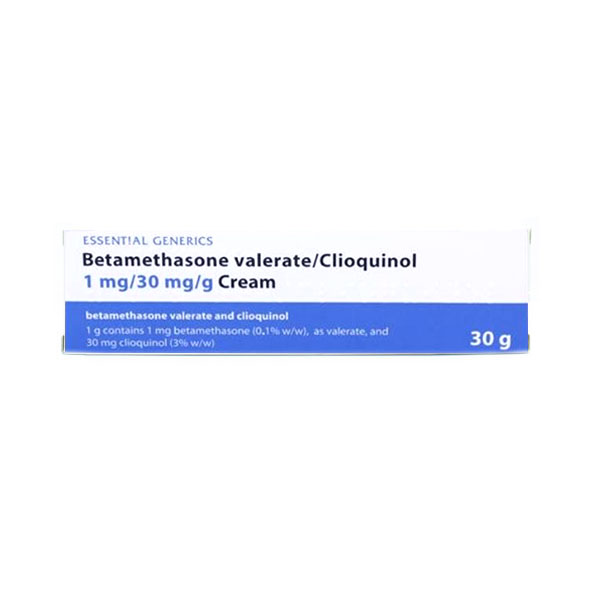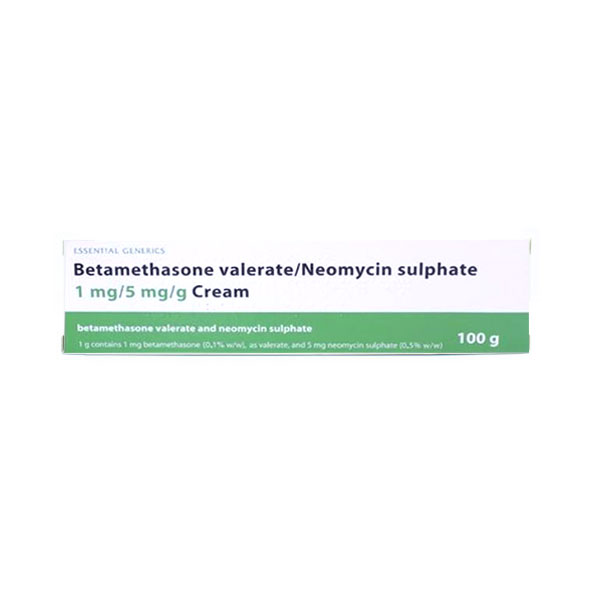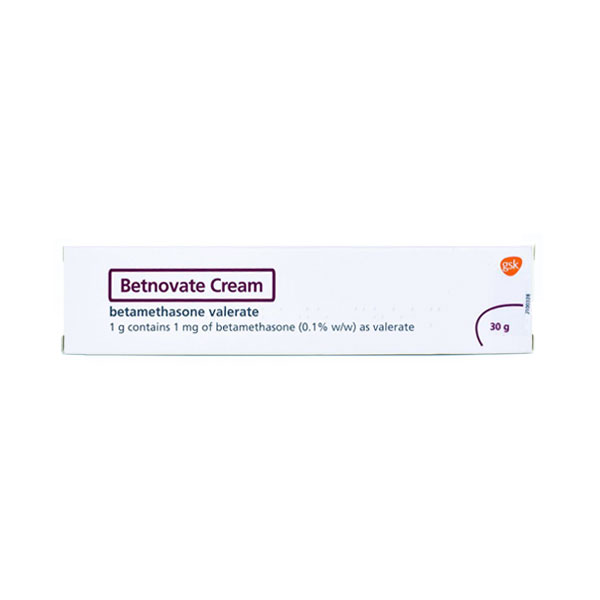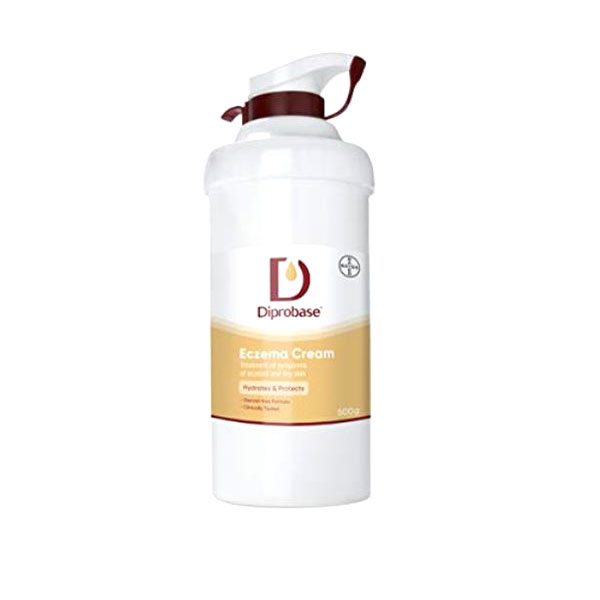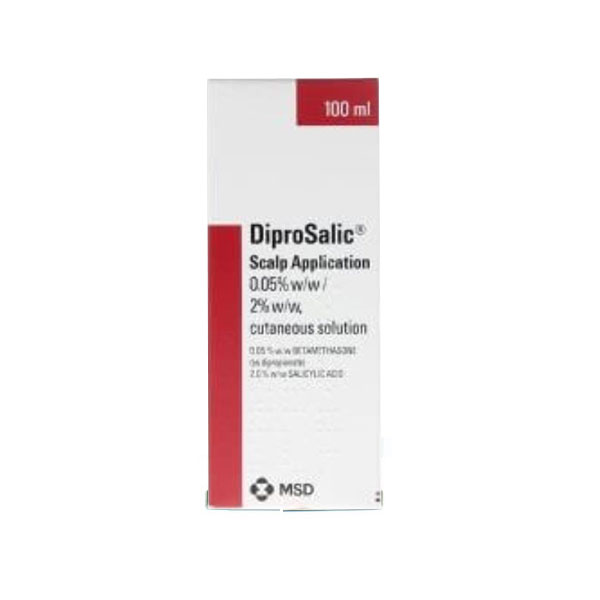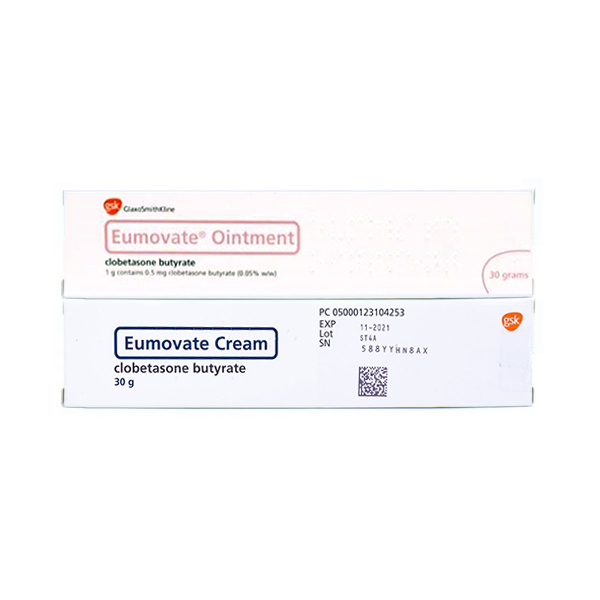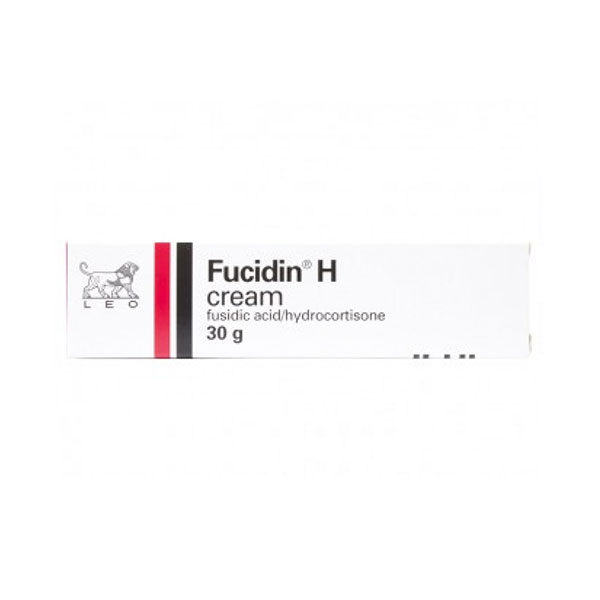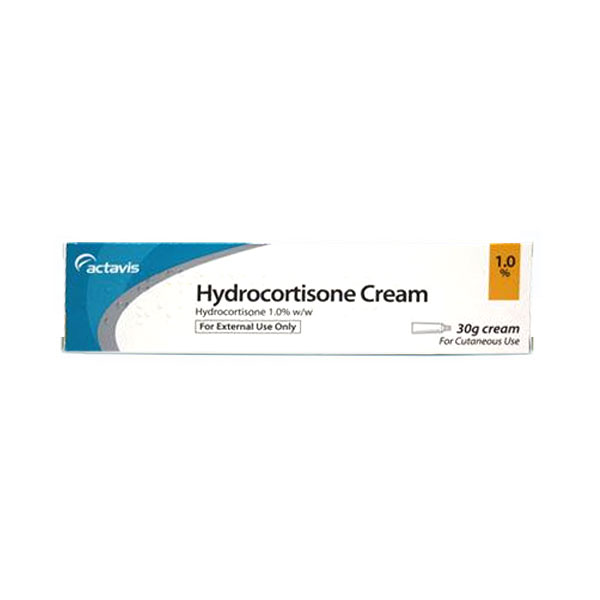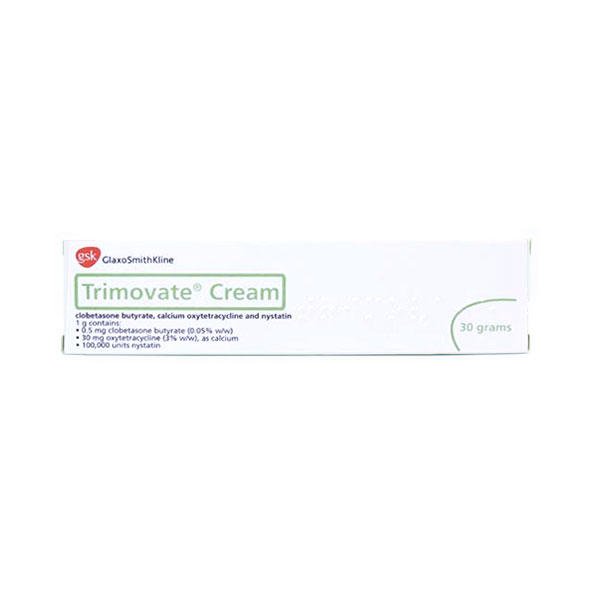Eczema treatments
Betamethasone with Clioquinol
Betamethasone with Clioquinol cream is a potent anti-inflammatory steroid cream with both antibacterial and antifungal properties. Used to treat skin conditions such as eczema, dermatitis, psoriasis and both bacterial and fungal infections secondary to these conditions.
Betamethasone with Neomycin
Betamethasone with Neomycin Cream is a potent antibacterial steroid cream used in the treatment of skin conditions such as eczema, dermatitis and psoriasis. The antibacterial component (Neomycin), enables the cream to treat most common bacterial infections of the skin.
Betnovate Cream
Betnovate cream is an anti-inflammatory steroid cream containing 0.1% Betamethasone valerate used in the treatment of inflammatory skin conditions such as eczema.
Diprobase Cream
Diprobase Cream is an emollient cream used to moisturise and protect skin following steroid treatment, or as an alternative to such treatment.
Diprosalic Scalp Application
Diprosalic Scalp Application is a potent corticosteroid used in the treatment of common inflammatory skin conditions such as eczema and psoriasis.
Eumovate cream/ointment
Eumovate (clobetasone) is a moderately potent steroid cream which produces an anti-inflammatory effect. It is an effective treatment for dry skin conditions such as dermatitis, eczema and psoriasis.
Fucidin H cream
Fucidin H is a combination product containing hydrocortisone and fusidic acid. Hydrocortisone is a mild steroid effective in the treatment of eczema, and dermatitis. Fusidic acid acts as an anti-bacterial agent and is effective against skin conditions which are also infected
Hydrocortisone Cream
Hydrocortisone is a mild steroid which produces an anti-inflammatory action and is effective in the treatment of eczema and dermatitis.
Trimovate Cream
Trimovate combines clobetasone, oxytetracycline and nystatin in a cream form to help combat dry skin conditions such as eczema/dermatitis which may also be infected.
What is Eczema?
There are many different types of eczema, often resulting in a chronic, itchy, inflammatory skin condition that can affect people of all ages.
It is thought that one in five children in the UK has eczema and up to 35% of these cases continue into adulthood.
For most people, they will experience episodes of flare ups when their skin will be worse. These may happen rarely – once or twice a year, or may be more common and in more severe cases, continuous.
Atopic eczema is the most common form of eczema and is sometimes known as atopic dermatitis. “Atopic” is a term used to describe a group of conditions – eczema, hay fever and asthma – that are linked to allergies. Atopic conditions tend to run in families, so if someone in your family as hay fever, eczema or asthma, it is more likely that you will also suffer from one of these. The exact cause of atopic eczema is not known but it is thought that genetics play a role.
A flare up of eczema may be triggered by allergens in the environment such as house dust mites and pollens. However, excessive washing, extreme temperatures, sweating, stress, certain foods, soaps and detergents can all trigger a flare up of eczema.
Treatment of eczema
There a many treatments that can help with a flare up of eczema, however, it is important to have a good skin care routine – even if there are no signs of a flare up.
Maintaining your skins health can help to reduce the frequency of flare ups and also reduce the intensity of flare ups.
When your skin flares up, it can have an impact on your daily life – including causing problems with your work or social life, sleep and mood. It is important, if your skin is causing you problems, that you let your doctor know if it is having an impact on your life.
You should use an emollient (moisturiser) liberally and frequently, even if your skin appears to be clear. It is particularly important to use an emollient during/after washing, you should lightly dry your skin and then apply the emollient whilst the skin is still moist. There are many different types of emollients – gels, ointments, creams and lotions – and it can take some time for you to work out which one is best suited to your skin.
If you are prone to eczema, you should also consider avoiding using soaps, detergents and bubble baths when washing as these can lead to drying of the skin and inst4ead opt for a soap-substitute.
During a flare up of eczema, it is best to avoid scratching the skin and it is recommended that nails are kept short. Scratching damages the skin and can cause breaks and tears in the skin which can delay healing or make your skin more likely to become infected.
Steroid creams can be helpful in treating eczema during a flare up. These can help to reduce the redness, itching and inflammation of the skin. Steroid creams can vary in strength from mildly potent steroids to more highly potent.
Your doctor will usually advice you to use a steroid cream for short bursts of treatment, and then stop or step down to a lower strength treatment as you skin starts to settle.
Depending on the steroid treatment your doctor has recommended, these will generally be applied either 1-2 times a day to the affected area of skin. You should always apply your treatment with clean hands.
It can be difficult to judge how much cream to apply to the skin. There is a common way of working out how cream to apply to the skin called the “Finger Tip Unit” (FTU). One FTU is the amount of steroid cream applied to an adult finger tip (from the end of the finger to the first crease of the finger). It is the equivalent of roughly 1g of cream and should be enough cream to cover an area around twice the size of an average adults hand.
| Area to be treated | Size is roughly (in adult hands) | FTU dose |
|---|---|---|
| One hand and fingers | 2 hands | 1 FTU |
| Front of chest and abdomen | 14 hands | 7 FTU |
| Back and buttocks | 14 hands | 7 FTU |
| Face and neck | 5 hands | 2.5 FTU |
| An entire arm and hand | 8 hands | 4 FTU |
| An entire leg and foot | 16 hands | 5 FTU |
Are Steroids safe?
The type of steroids used to treat eczema are different to the types of steroids your read about in the media related to bodybuilding and sports.
The likelihood of experiencing side effects related to the strength of the steroid cream, where it is being applied and how long you use it for.
If used inappropriately or over a long period of time, steroid creams can thin the skin, make blood vessels in the skin appear more prominent and cause the skin to lose its elasticity causing stretch marks. It is also possible to experience an increase in hair growth and thickness in the area where the cream is applied.
When steroids are used as part of an overall program, in conjunction with your doctor, to manage eczema, they remain the most common and most valuable tool in treating eczema.




